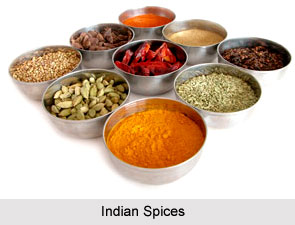 Similar to all other cuisines, Indian cookery has its own style and techniques that are the amalgamation of the heritage of its people. It represents its historical development, religious beliefs, cultural practices and above all, its geographical attributes. It is, in fact, an amalgamation of the cuisines of many diverse regions. Indian cookery is the fusion of the ingenious way that fragrant herbs and aromatic spices are used in all the regions. Indian cookery is the representation of the types of spices that are used in Indian food and thus, is the most aromatic of all cuisines for the captivating fragrances and intriguing flavours.
Similar to all other cuisines, Indian cookery has its own style and techniques that are the amalgamation of the heritage of its people. It represents its historical development, religious beliefs, cultural practices and above all, its geographical attributes. It is, in fact, an amalgamation of the cuisines of many diverse regions. Indian cookery is the fusion of the ingenious way that fragrant herbs and aromatic spices are used in all the regions. Indian cookery is the representation of the types of spices that are used in Indian food and thus, is the most aromatic of all cuisines for the captivating fragrances and intriguing flavours.
Even though India is one of the oldest civilisations, it has been enriched over a period of many centuries by the different cultures that were superimposed with each new invasion. These invaders brought with them new ideas and concepts; they introduced new cooking ingredients and techniques which spread to different regions of India, enhancing and refining the local cuisine. However, this influence was concentrated mainly in the North, where the new hordes primarily settled because of the similarity of the climate and landscape to those they came from. Furthermore, the natural barriers and great distances made migration to the South slow and infrequent. Thus northern cooking evolved far more over the centuries than other regional cuisines and attained unparalleled distinction.
The popularity of Indian cookery has been increased since the last few decades because of the migration and the popularity of Indian culture in many Indian regions and western countries. The techniques involved in Indian cooking incorporate some simple and artistic touch with the sprinkle of Indian flavours. A list of cuisines are made by using the simple techniques of Indian cookery including "sambar", "dum", "kaska", "talna" etc with the usage of a lot of aromatic spices that give the dishes the taste of India. With the diversity of regions, the cooking styles differ and sometimes an assimilation of different techniques is observed in Indian cookery.
With the progression of time, Indian cookery has adopted the techniques of different regions and countries which have enriched the Indian cooking style keeping the tradition of India intact.




















